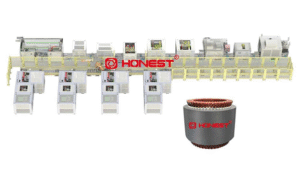How Fleet Management Solutions Cut Downtime and Fuel Waste

Efficiency on the road is more than just hitting delivery targets. Every minute a vehicle idles or strays from its route burns fuel and eats into profit. For businesses that depend on transport and logistics, even a few small delays can cause a chain reaction of costs. That is why many companies now turn to a fleet management solution to keep every vehicle and driver in check, saving time, fuel, and stress along the way.
The Hidden Cost of Downtime
Downtime in fleet operations is like a slow leak. It might start small, but it quickly drains resources. A single breakdown can cause delivery reschedules, driver overtime, and frustrated clients. The goal is to predict these hiccups before they happen. Through real-time tracking and diagnostics, a fleet management solution gives managers a constant look under the hood, flagging maintenance issues before they turn into full-blown repairs.
Instead of waiting for warning lights or emergency calls, digital dashboards provide continuous updates on engine performance, brake wear, and tyre pressure. When paired with machine monitoring, these systems offer a data trail that helps identify recurring faults and helps schedule repairs at the right time. Less downtime means more deliveries, happier customers, and steadier profit margins.
Smart Routes Mean Smart Savings
Fuel is one of the biggest expenses for any fleet, but waste often comes from inefficiency rather than distance. Unnecessary idling, detours, and poor route planning quietly inflate costs. A well-integrated fleet management solution cuts through this waste by using GPS tracking and live data to optimise routes and travel times. Drivers are directed to shorter or less congested paths, while alerts flag extended idling or off-route movement.
With machine monitoring tools, fleet operators can also compare fuel consumption between vehicles and drivers. This makes it easier to spot who drives smoothly and who may be over-revving or braking too hard. Small improvements in driving behaviour add up over time. Fewer pit stops at the pump and less engine wear translate to measurable savings that show up in monthly expense reports.
Maintenance Made Predictable
Fleet maintenance used to follow a simple pattern: fix things when they break. That approach works until it doesn’t. The smarter strategy now is predictive maintenance. It is built around machine monitoring data that tracks usage, temperature, vibration, and other mechanical indicators. When readings start to stray from the normal range, alerts can trigger maintenance scheduling before any failure happens.
This shift from reactive to proactive management means fewer surprise breakdowns and better use of workshop hours. Instead of taking several vehicles off the road at once, maintenance can be staggered based on need. The result is higher vehicle availability and smoother day-to-day operations.
Driving Behaviour and Accountability
Drivers play a huge role in keeping fleets efficient. Sudden acceleration, sharp turns, and prolonged idling may seem minor, but they pile up into serious fuel and maintenance costs. Many modern fleet management solution platforms include driver behaviour analytics, tracking real-world actions through telematics. When patterns show room for improvement, companies can provide targeted feedback or short training sessions.
The goal is to support drivers through guidance and empowerment, not to micromanage. By showing drivers their own performance metrics, they can see how habits affect costs. Some firms even use gamified scorecards to keep motivation high. A friendly rivalry over who drives most efficiently can be more powerful than any memo from management.
Data That Drives Better Decisions
One of the biggest strengths of these systems is the clarity they bring to everyday decisions. Reports generated from machine monitoring and telematics data reveal trends across the fleet. Managers can compare vehicle types, analyse the lifespan of components, and evaluate which models deliver the best fuel economy. Over time, this data shapes smarter purchasing choices and tighter operational planning.
With a fleet management solution, insights arrive in real time rather than after the fact. Instead of relying on guesswork or outdated spreadsheets, companies have a digital overview that evolves with every trip. It’s like having an operations manual that updates itself after each journey.
Sustainability on the Move
Efficiency doesn’t stop at profit margins. Reducing fuel waste naturally cuts emissions, helping businesses meet environmental goals. When vehicles travel optimal routes and stay in good mechanical health, they leave a smaller carbon footprint. It’s good for the planet and good for public image. In an age where clients value sustainability, a well-maintained and well-monitored fleet becomes an asset beyond numbers.
A Future Fueled by Insight
Fleet management today focuses on more than engine upkeep; it relies on the steady flow of information that keeps every journey efficient and informed. The integration of machine monitoring, GPS, and analytics software makes logistics leaner, safer, and smarter. Each trip becomes a lesson, each reading a clue to better performance. By cutting downtime and fuel waste, companies move closer to a model of operation where every kilometre counts.
Smooth rides are built on sharp insights. Whether managing a handful of vans or a nationwide convoy, the message is clear: efficiency is no longer a luxury but a necessity.
Contact Overdrive IOT to make your fleet run cleaner, faster, and smarter.




